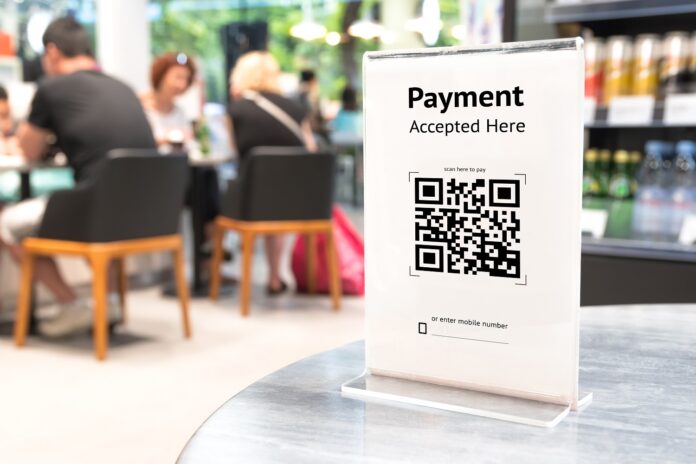What Are QR Codes? How Do They Work?
Back in 1994, the Japanese automotive company Denso Wave developed an alternative to barcodes that could be scanned in any direction and had patterns both vertically and horizontally. This simple pattern of black barcodes arranged in a square grid can be easily scanned by a compatible code scanner/reader or a smartphone with an in-built camera reader.
The shape and size of pay with QR code are standardised, so anyone can make sure their QR codes are compatible with other devices. The size of a QR code is limited to no more than 21×21 pixels, but this format is applicable for all kinds of QR codes from generic one-dimensional (1D) to multi-dimensional (2D) matrix codes just.
In comparison, a QR code can hold 100X more info than a barcode. Moreover, it can store up to 7,089 digits or 4,296 characters, including punctuation marks and special characters making it a lucrative option for business owners for a variety of uses, payments for instance!
Types of QR Codes
We can broadly classify the types of QR codes as:
- Static Codes
- Dynamic QR Codes
Static QR codes have their advantages and disadvantages. For example, once a static QR code has been created, it isn’t possible to make any changes to the information that is encoded within. If there are errors, the entire QR code will be obsolete. On the other hand, it is possible to create a denser pattern of information within the QR code, making it much smaller than a dynamic QR code. This could be a benefit for anyone who needs to store vast amounts of information within their QR codes. A static QR code finds its use in places where there is little room for change. For example, an employee ID card must not allow room for error or alteration in information such as contact details or job duties. This ensures that there is no confusion between employees; this could be an issue if an employee with the same name were hired at another store.
QR codes can be used in all kinds of ways, whether they’re static or dynamic. Static QR codes are great for campaigns and advertisements where you want to include a URL that’s set in stone. For example, you may want to include a link to your website on business cards or in print ads.
Dynamic QR codes are great when you need to change the destination of your links or data. You might want to do this if you’re hosting an event and want your QR code to direct users to the details page for that specific occasion. You could also use dynamic QR codes for special offers and discounts at shops and outlets with more than one point of purchase—all directing to the same payment destination.
What are the benefits of QR code payments for merchants, shop owners, and vendors?
The past decade has seen an increase in the number of payment systems available to merchant QR Code. Online payment systems like Paypal and Google Wallet have simplified the transferring of money between buyers and sellers, reducing costs and making it easier than ever to transact online. But what if you’re a business owner that relies on cash-only revenue? What if you have a store that doesn’t have a reliable internet connection? How can you accept payments from your customers more conveniently?
Truly, the answer is QR codes. Invented in 1994 by Toyota, the QR code system has been used for a wide range of applications, from tracking product shipments to supply chain management and creating digital tickets for events. But as smartphones became more prevalent in the 2010s, businesses began to see the potential of using a QR code as an alternative payment system for their offline goods and services. These days, many small businesses are using QR codes not only for accepting payments but also as a way to build customer loyalty and attract new customers.
A key feature of QR codes is their interoperability. A different kind of contactless payment technology like Apple Pay can only be used with one type of smartphone (iOS or Android). However, since a QR code is simply a scannable image, it can be scanned.


